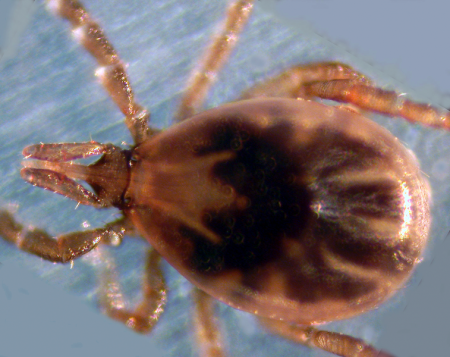Protect yourself from black-legged ticks this summer, but also understand how disregard for the environment helps them spread, say local scientists.
Ticks bearing the bacteria that causes Lyme disease, such as those that have infected six people near Admiral’s Cove Park in Bedford – including a 13-year-old boy – have appeared in Nova Scotia as "part and parcel of the migration of the northern limits of these creatures," says meteorologist and science writer Richard Zurawski.
"The last 5 months, from January to May, were the warmest ever recorded in North America… and the bulk of [the warming] is from anthropogenic climate change," says Zurawski. Anthropogenic climate change refers to climate change caused by human activity.
“The climate is changing, and we’re not planning for the future,” he adds. As average global temperatures increase, species such as the black-legged tick seem able to survive and thrive in environments previously inhospitable to them.
While ticks do not migrate very far on their own – not more than a few metres – they feed by attaching themselves to hosts, such as deer or humans, who can carry them much further.
Some of those ticks that embed themselves in human skin can transmit the bacteria that causes Lyme disease, a sometimes debilitating disorder with symptoms ranging from chronic fatigue to arthritis.
Nova Scotia has seen 48 cases of Lyme disease since its first reporting in 2002, according to the Department of Health Promotion and Protection. This month’s cases in Bedford prompted a controversial plan by city council to use a powerful pesticide in the park – a plan quickly nixed by the provincial NDP government as it came to light that the pesticide is not approved for use in Canada. Bedford councillor Tim Outhit and the Chronicle-Herald’s editorial team have both condemned the province’s decision.
Andrew Hebda, a zoologist with the Museum of Natural History, emphasizes that the cases of Lyme disease in Bedford do not yet tell us whether or not the disease will thrive there in the long term. Five to ten years of data are needed to detect a pattern, he says, while noting that more data is available for Lunenburg County.
Along with climate change, Hebda says, other factors may well have contributed to the spread of Lyme-bearing ticks. A larger radius of forestry harvesting, for example, can cause a shift in the migration patterns of host species. “Major changes on the landscape level are going to affect the movement of the host, whether through [forestry] harvesting, development, blueberry harvesting,” says Hebda.
As well, climate change “can exacerbate the lack of food for deer populations” and provoke further migration to previously uninfested areas, he adds.
Gretchen Fitzgerald of Sierra Club Atlantic argues that although people in Halifax Regional Municipality must deal with the current tick problem, more should be done in order to understand and mitigate further such problems in the future.
“We’ve got a government federally that’s gotten rid of or gagged scientists who would be working on [the effects of climate change in Canada]” says Fitzgerald, referring to a recent comprehensive report by Climate Action Network Canada which documents the Harper government’s “troubling” approach to climate-change science.
The report, titled “Troubling Evidence: The Harper Government’s Approach to Climate Science Research in Canada,” uncovered repeated denial of government funding to climate research centres, delaying and downplaying of significant findings on the effects of climate change, and strict control of Environment Canada scientists’ access to the media, among other actions that “undermine Canadian climate science research.”
Health Canada studies* have linked diseases such as Lyme to temperature change, says Fitzgerald, but the public isn’t aware of this because scientists can’t report their findings. Canadians need to prepare for the realities of climate change, but “the federal leadership is trying to make us unprepared. It’s kind of crazy,” she says.
On a more local level, Fitzgerald points to issues such as urban planning, which she says needs to examine how commercial and residential development affects the health of ecosystems and disrupts wildlife – and by extension, humans. “HRM by design [the municipality’s regional design plan passed last year after much debate] is supposed to incorporate sustainability, but we’re not thinking about the way development is done,” says Fitzgerald. “We’re not thinking about how the environment is changing and will affect us…a boy is very sick because of this.”
Andrew Hebda agrees. “We don’t live very well with our natural ecosystems,” he says, “and should look to try to find how we can work better with them without compromising how we do live. When things like oil become scarce there will be a compromise. It’s a question of now or later.”
“Everywhere we go we leave an ecological footprint,” says Hebda. “But some of those footprints are indelible.”
*The study referred to is downloadable for free at http://www.climateneeds.umd.edu/pdf/humanhealth.pdf. P. 185 deals with Lyme disease.



